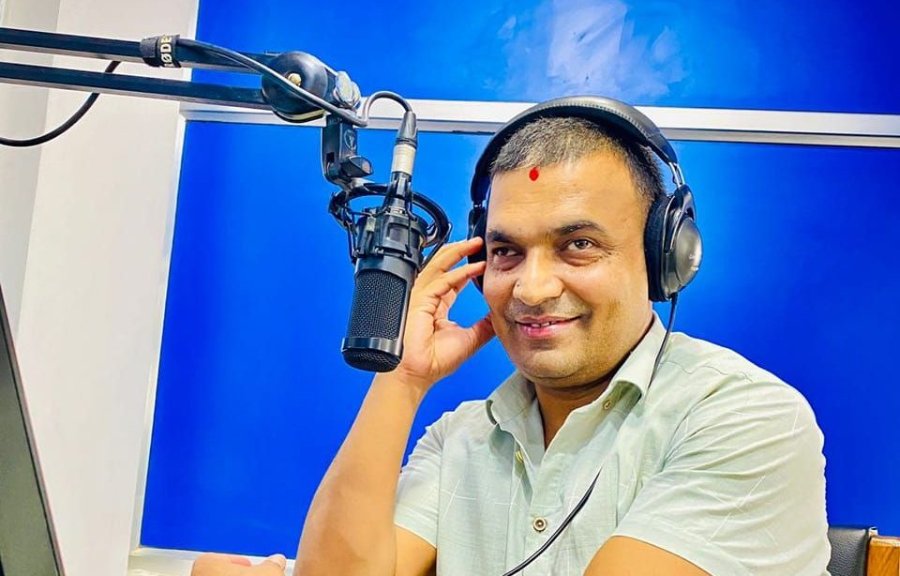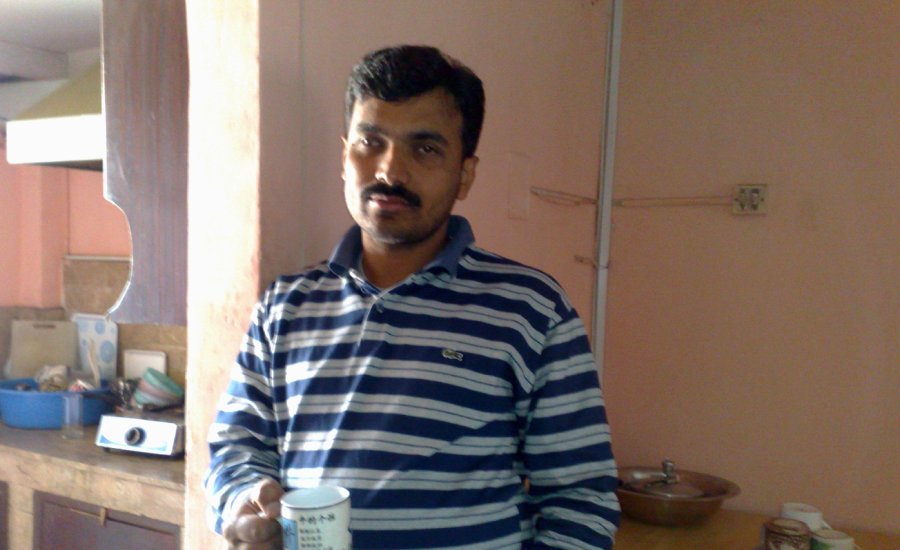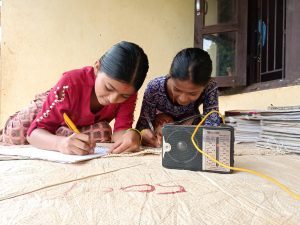
Achyut Ghimire was 23 years old when he first stepped into a studio to narrate a story. Now, his age has doubled. Since his debut, many things have changed in the broadcast industry but his daily life and identity have remained the same.
Anyone who listens to the radio would know Achyut Ghimire as someone who narrates stories in Shruti Sambeg. In the initial days, the programme was broadcast once every 15 days, then once in a week and later twice a week.
Over 100 different radio stations used to play his radio programmes. According to a survey by Sharecast Initiative in 2015, Shruti Sambeg was the most-played radio programme in Nepal.
The mystery
There was a time when people could easily recognise Ghimire’s voice. But no one knew what he looked like. And he did not expose his looks. He did not let anyone take his pictures. He avoided gatherings. Ghimire concealed himself. His listeners were curious about his looks.
People used to assume about his looks by listening to his voice. During his initial days, it was not easy to get feedback instantly like these days. Even after narrating and broadcasting eight stories by Bhairav Aryal from Bhudi Puran, his appearance was a mystery to his listeners.
Also, he did not know how the audiences were receiving his works. Back then there were no social media platforms like now from which one could immediately receive feedback. The only medium to receive feedback was letters. But he was not even getting letters.
However, one fine evening, he received a letter from Shova Mainali. He rushed to read the letter. The letter was poetic. More than a letter, it was a gift for him. Subsequently, more letters from the same sender continued to arrive.
Gradually, the number of letters increased. He started receiving hundreds of letters each week.
“Earlier, I used to read the same letter repeatedly. But later, I did not have time to open the letter,” says Ghimire. “The letter used to include appreciation, stories and poems, with a request to narrate them.”
Among those letters, some of the special letters are still with Ghimire.

The fame and trend
Initially, there used to be a dearth of stories to narrate. Similarly, Ghimire did not have money to buy books. With his savings from pocket money, he used to visit book exhibitions and buy a couple of books. In that regard, he bought a book Antyahin.
He started narrating the book by dividing it into four parts. The story of the books largely captivated listeners. He started receiving feedback. The book was a hit in Shruti Sambeg. However, the Ghimire did not personally know the writer of the book Shobha Bhattarai. Bhattarai used to live in Canada. Later after she came to Nepal, they had a meeting.
Gradually, the book publisher and author started approaching Ghimire to narrate the stories of their books. With time, the number of books started growing hugely. He could not read all those books.
Even three years after its publication, Narendra Neupane’s Durbar Bahirako Maharani failed to create hype in the market. But after the book was narrated in Shruti Sambeg, the book garnered unexpected popularity.
“The book became so popular that still 2000-3000 copies are being sold annually,” says Ghimire.
Jhola, a collection of stories, written by Krishna Dharabasi was published in 1996. However, the book did not get the expected popularity. Five years later when Ghimire narrated the book, it started gaining popularity.
The book even won the Madan Puraskar, one of the biggest literature awards in Nepal.
“Since then Dharabasi immediately calls me after releasing a book,” he says.

The storyteller
Many other books got fame after being featured in Shruti Sambeg. Still, many authors wish to feature their books in Shruti Sambeg. And among them, there are also books he finds boring to complete. He has left reading many of the books in the middle.
Some of his favourite books are Mero Nilima of Madan Mani Dixit, Buba Aama Ra Chora and Tin Ghumti of BP Koirala, Paravasit Aankhaharu of Parijat, Karnali Blues of Buddhi Sagar and Pani Ko Gham of Amar Neupane.
Shruti Sambeg was very helpful for those who love reading but unable to get its physical copy. For those disinterested in literature, Shruti Sambeg made them addicted to listening to stories.
It must be Ghimire’s destiny to be a storyteller and bring a trend to storytelling on the radio. Ghimire recalls a school friend who used to ask Ghimire to narrate the story written by him (friend). “Maybe he used to like my voice,” says Ghimire.
After completing school, Ghimire started to give tuition classes in mathematics and science. At that time, one of his students asked him to apply for a vacancy on the radio. There was a vacancy in HBC FM, and he applied for it.
Along with Ghimire, Kuber Chalise and Devendra Gautam were selected. Initially, he worked in an audio library. Only after a year, he got an opportunity to present the news.
Afterwards, he also started narrating stories and rest in history.




















